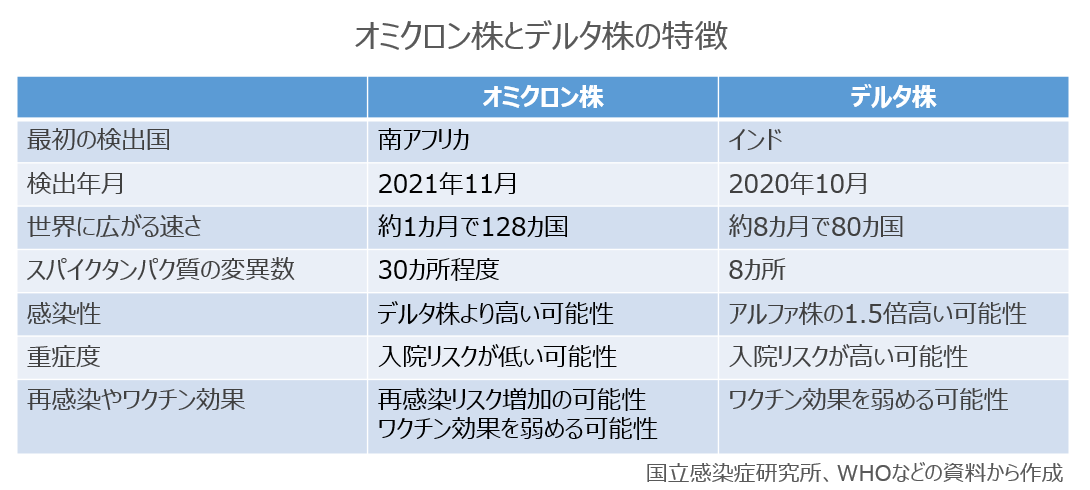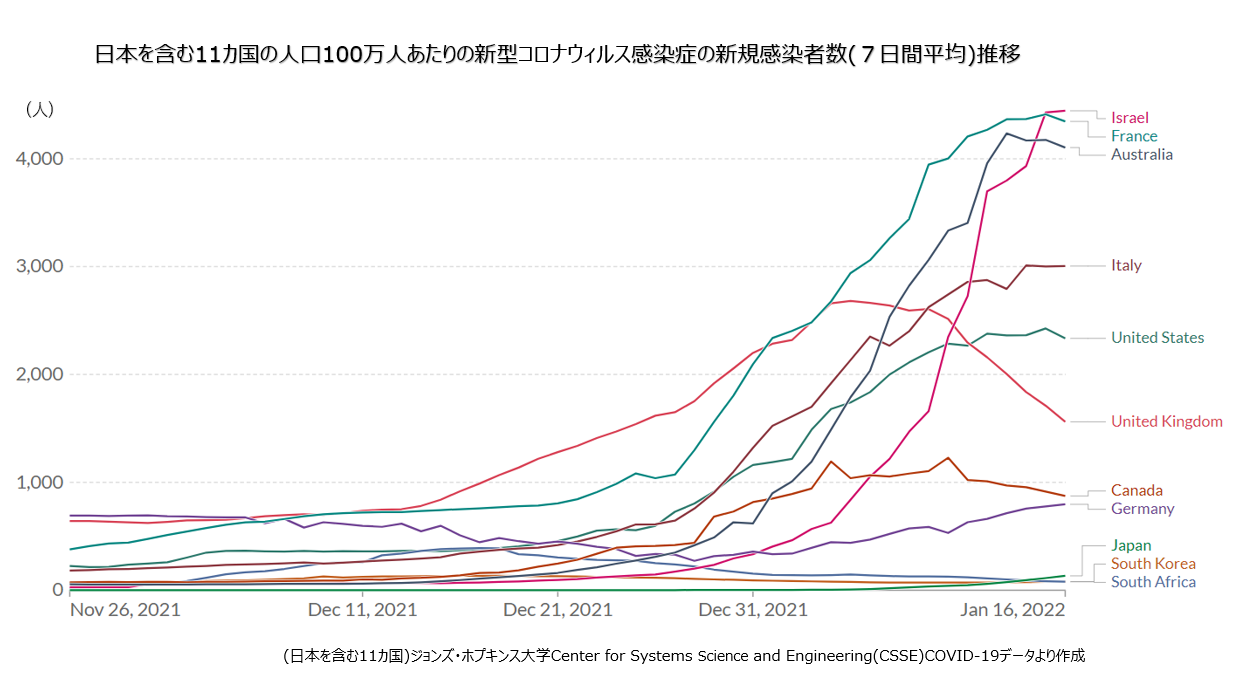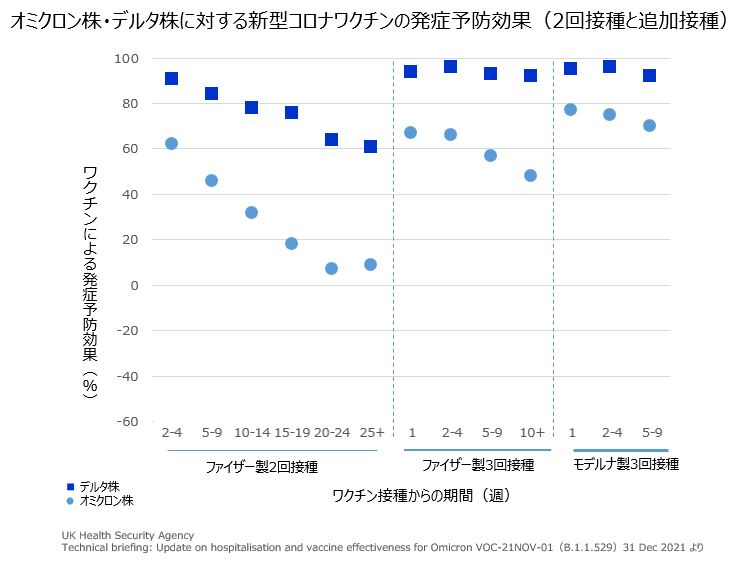
Publication date: 2022.01.18
More than a month has passed since the "Omicron strain", which is considered to be a new mutant strain of the new coronavirus, was discovered in Japan. The total number of people infected with the Omicron strain in Japan has exceeded 1,000, including airport quarantines, and has been confirmed in many prefectures. We have summarized the information known from current research, such as the infectivity and severity of the Omicron strain.
While the Delta strain has not converged globally, the Omicron strain was reported from South Africa on November 24, 2021 and designated as a 'variant of concern' by the World Health Organization (WHO). After that, it spread to Europe and spread worldwide, and as of December 29, it has been confirmed in 128 countries.

The first case of Omicron strain confirmed in Japan was a case of a person who entered Japan on November 28, last year. Three weeks later, community-acquired infection was confirmed, and it is rapidly spreading nationwide. Experts point out that it is highly likely that the Delta strain will be replaced by the Omicron strain in the near future. The strength of the infection is remarkable, and the average number of people that one infected person can infect others (effective reproduction number) is 3 to 6 times that of the delta strain.
The Omicron strain has about 30 genetic mutations in the spike protein gene on the virus surface, and about 15 of these mutations exist in the receptor binding sites involved in the establishment of infection. This may have made it easier to bind to human cells than conventional coronaviruses.
The doubling time of the Omicron strain (the time it takes for the cumulative number of infected people to double) has been reported to be as short as 2-3 days, based on analysis of endemic areas such as the UK and South Africa. In Australia, after December 3, 2018, when the first community-acquired infection with the Omicron strain was confirmed, the infection has spread rapidly, and the number of new infections, which was about 1,500 at that time, increased to about 88,000 on January 8 this year. and the highest ever. In the United Kingdom, the United States, and France, where Omicron strains are becoming mainstream, the number of new infections per day has reached a record high, and breakthrough infections have been reported one after another.

According to a study in London, the most common symptoms among those infected with Omicron were similar to those of the common cold, including a runny nose, headache, fatigue and sore throat. The WHO also states that unlike other mutated viruses that cause pneumonia, it often causes inflammation in the upper respiratory tract, such as the nose and throat.
Several studies have reported that Omicron strains are less likely to develop severe disease than conventional mutant strains. A study from Imperial College London (ICL) in the UK estimated that people infected with the Omicron strain had a 40-45% lower risk of staying in the hospital for more than one night compared to those infected with the Delta strain. The UK Health and Security Agency (UKHSA) has also announced that the risk of hospitalization due to Omicron strain infection is about one-third that of Delta strain. A South African National Institute of Infectious Diseases study also found that the risk of hospitalization was 70% lower than other variants.
The Japanese research group "G2P-Japan" has revealed the results of animal experiments that the pathogenicity of the Omicron strain may be weak. Changes in body weight are one indicator for assessing virulence. Hamsters were infected with the conventional strain, the delta strain, and the Omicron strain, respectively, and examined for changes in body weight. Each group lost more than 10% body weight. In contrast, the body weight of the Omicron strain group remained almost unchanged. Regarding respiratory function, the oxygen saturation in both the conventional strain group and the delta strain group decreased sharply from the second day after infection, but the decrease in the Omicron strain group was slight and was almost the same as the non-infected group. In addition, a group of researchers in Japan and the United States reported that hamsters infected with the Omicron strain suffered significantly less lung damage than other mutant strains. These results suggest that the pathogenicity of Omicron strains may be weak.
Regarding the effectiveness of the vaccine against Omicron strains, the vaccine is designed to generate antibodies against the spike protein after vaccination, so it is thought to be less effective against Omicron strains that have many mutations in the spike protein. . According to a report by UKHSA, the efficacy of Pfizer or Moderna in preventing the onset of Omicron strains is lower than that of Delta strains. was decreasing to The vaccine efficacy was approximately 65-75% 2-4 weeks after booster administration, decreased to 55-65% at 5-9 weeks, and 45-50% at 10 weeks or more.

Also, according to ICL research, even those who are immune from past infections are more likely to be reinfected with the Omicron strain, and the risk of reinfection with the Omicron strain is more than five times higher than with the Delta strain.
The emergence of the Omicron strain has also had an impact on therapeutics. Experiments showed that the antibody drug Lonapreve, which received special approval last summer, has a lower neutralizing activity against the Omicron strain. I have issued a notice to
According to research so far, the characteristics of the Omicron strain include (1) high infectivity, (2) mild symptoms, (3) low severity rate, (4) increased risk of reinfection, and (5) weakening of vaccine effects. At present, the frequency of severe cases of Omicron strains is considered to be low, but if the number of infected people explodes, a certain percentage of hospitalized patients and severely ill patients will appear, which will increase the possibility of causing medical strain. In addition, if the infection spreads to people at risk of becoming seriously ill, such as the elderly, there is a risk that it will have a major impact. Thorough infection control measures, including booster vaccinations, are desired.
MEDIUS Group is developing a business centered on the sale of medical equipment. We (Medical + us) involved in medical care also want to play the role of an information source (Media) that delivers useful information for the medical field and people's healthy tomorrow.